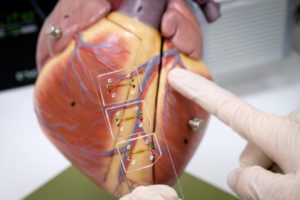
Credit: NTU Singapore
A Singapore team of scientists and clinicians from Nanyang Technological University, Singapore (NTU Singapore) and Tan Tock Seng Hospital (TTSH), have developed a three-dimensional (3D) model of the human artery blood vessel wall. Called an “arterial wall-on-a-chip”, it will help researchers study atherosclerosis.
Cardiovascular diseases account for some 32% of deaths worldwide, claiming some 17.9 million lives annually. In Singapore, about 6,990 deaths or about one third of all deaths in 2020 were due to heart disease or stroke.
Using the 3D model, the researchers discovered new knowledge about the early stages of atherosclerosis: as oxidative stress increases, an increase of inflammation happens together with a build-up of plaque.
The team also observed that Vitamin D and a common diabetes medication, metformin, helped to prevent certain key processes leading to the plaque formation. This suggests that their 3D model can be potentially used to screen and test new drug molecules that can treat or prevent atherosclerosis.













